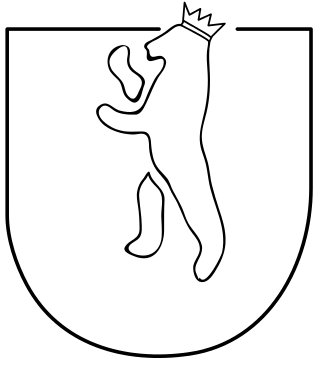
The 197th Infantry Division was a Wehrmacht division in World War II. It was activated on 1 December 1939.

The 213th Security Division, initially known as the 213th Infantry Division, was a rear-security division in the Wehrmacht of Nazi Germany. The unit was deployed in German-occupied areas of the Soviet Union, in the Army Group South Rear Area.
In the German Wehrmacht before and during World War II, infantry divisions were raised as part of a designated Aufstellungswelle or Welle (wave), sometimes translated as "draft". The Aufstellungswelle system was adopted by the Wehrmacht in late 1938. Peacetime units were the first wave, and 34 other waves followed until the 35th wave in April 1945. Several types of divisions were organized by Aufstellungswelle, including infantry, security, shadow and Volksgrenadier divisions.
The 702nd Infantry Division was an infantry division of the German Heer during World War II.
The 217th Infantry Division was an infantry division of the German Heer during World War II. It later became the Division Group 217. It is also listed as the 217th Volksgrenadier Division.

The 211th Infantry Division was a German infantry division of the German Heer during World War II, active from 1939 to 1944.
The 225th Infantry Division was an infantry division of the German Heer during World War II.
The 295th Infantry Division was an infantry division of the German Heer during World War II.
The 159th Infantry Division was an infantry division of the German Heer during World War II. The unit, at times designated Commander of Reserve Troops IX, 159th Division, Division No. 159, and 159th Reserve Division, was active between 1939 and 1945.
The 196th Infantry Division was an infantry division of the German Heer during World War II.
The 251st Infantry Division was an infantry division of the German Heer during World War II.
The 253rd Infantry Division was an infantry division of the German Heer during World War II.
The 254th Infantry Division was an infantry division of the German Heer during World War II.

The 257th Infantry Division was an infantry division of the German Army during World War II.
The 260th Infantry Division was an infantry division of the German Heer during World War II.
The 296th Infantry Division was an infantry division of the German Heer during World War II.
The 298th Infantry Division was an infantry division of the German Heer during World War II.

The 306th Infantry Division was an infantry division of the German Wehrmacht during World War II.
The 321st Infantry Division was an infantry division of the German Heer during World War II. Between November 1943 and June 1944, it was known as Division Group 321.
The 327th Infantry Division was an infantry division of the German Heer during World War II.




